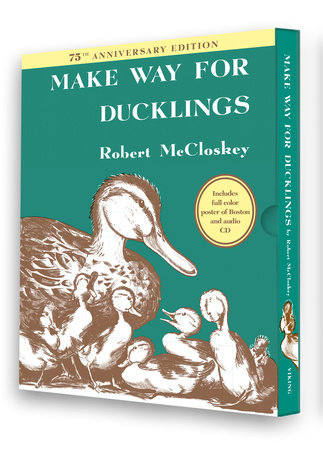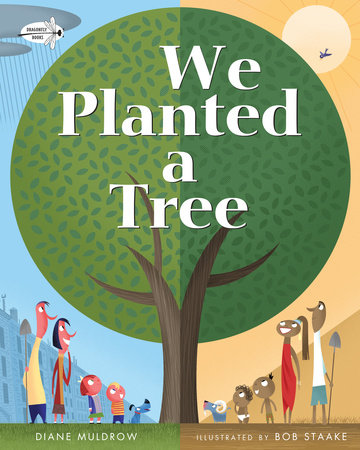Little Golden Books Turns 75!
A Look Back at the Iconic Collection with Editor Diane Muldrow
by the Brightly Editors
Mention a Little Golden Book to someone and you’ll likely be met with a smile in return. From The Poky Little Puppy to Scuffy the Tugboat to Sesame Street and Star Wars, these books have delighted generation after generation of readers with their instantly recognizable gold spines and warm and welcoming stories. This year, Little Golden Books turns 75 — and with plenty of new characters to meet and delightful tales to tell, Little Golden Books continues to shine bright. We chatted with Diane Muldrow, editorial director at Golden Books (and one of the collection’s bestselling authors), about the history of Little Golden Books, the wonderful and unexpected characters that have graced its pages, and some of its best life lessons for readers of all ages.
What are some of the things you love best about the Little Golden Books?
There are so many things I love about Little Golden Books! The unusual but cheerful colors; the bright gold foil spines (one of the best ideas in the history of children’s publishing); the wit that shines through those iconic characters; the clever titles (Tawny Scrawny Lion for example); the sturdy, shiny covers; and of course, the wonderful graphics that invite you into the book: the cute animals on the “endpapers” that surround the book plate which says so welcomingly, “This Little Golden Book Belongs To….” Even the curly font of the LGB logo is so friendly and beautiful. What a happy mood it creates, and gives to the reader. A Little Golden Book feels unique and special, yet it’s for everyone.
I also love how Little Golden Books have always reflected our times. The early Little Golden Books had dust jackets believe it or not, which featured copy advertising war bonds. (From The Poky Little Puppy: “…All the five little puppies buy War Stamps every week. So should you.”) Supermarkets came along in the late 1940s, and Little Golden Books were soon offered in them. Many of the Little Golden Books of the 1950s were often TV or movie tie-ins featuring Tom and Jerry, Woody Woodpecker, Howdy Doody, Roy Rogers, Dale Evans, Maverick … and don’t forget the dog Rin Tin Tin. And there’s a Little Golden Book titled Feelings (not currently in print) that only could have come out in the 1970s!
Little Golden Books got its start creating high quality yet affordable books for children. Why was this founding mission so significant?
The launch of the Little Golden Books was revolutionary. Until that time, high-quality children’s books (such as Make Way for Ducklings, published in 1941) cost about two dollars — which made them luxury items for most families. Little Golden Books came along in October 1942 — the height of America’s involvement in WWII — and cost just 25 cents! (They even had mostly full-color pages, which many $2 books did not.) They came at a time when America really needed them. Even during wartime, most families could afford 25 cents for a book for their child. It may be that Little Golden Books were many families’ first children’s books. They certainly helped boost morale on the home front, but that’s just the beginning. Within five months of the Little Golden Book launch, 1.5 million copies had been printed, and the original 12 titles were in their third printing. America was still quite rural then and not everyone had easy access to bookstores or libraries, but Little Golden Books were available where people shopped every day, such as drugstores and newsstands. I would think that Little Golden Books really helped to boost the post-war literacy rate in this country.
The “This Little Golden Books Belongs To…” bookplate is also so symbolic of how Little Golden Books democratized reading for children. A child could write his or her name in it, which was not really the case for a book that cost two dollars, which was probably kept safe on a high shelf. At a time when children did not own many of their own possessions, this pride in ownership must have meant the world. It’s a happy memory that people often tell me about — writing their name in a Little Golden Book. I’m sure kids still enjoy doing this!
A lot changes in 75 years, and yet a Little Golden Book from decades past looks remarkably similar to one today. How have you maintained this consistent look and feel? Why do you think it’s been important to do so?
It’s important to keep the branding strong and familiar of course. Why fix something that isn’t broken? But also, Golden Books art director Roberta Ludlow, and I — when we work on new Little Golden Books — choose illustrators whose style is bright, cheerful, classic in feel, but fresh — that won’t easily date. I choose content for Little Golden Books that way, too. It has to be strong preschool content with a special storytelling style, that won’t feel outdated in a few years. It has to feel fresh and classic at the same time. It has to open up the world in a wonderful way to a small child. I hope that the Little Golden Books I edit will become the classics of tomorrow.
You authored the wonderful Everything I Need to Know I Learned From a Little Golden Book. What’s your go-to life lesson from a Little Golden Book?
Thank you for the compliment. I wrote it for my own entertainment really, and so I was thrilled that it was published. Anyway, I’d say my go-to life lesson would be, “Daydream.” Daydreaming is good for your brain. And I’ve gotten my best ideas by daydreaming!
Who are some of the most fun or surprising people (or characters) to have been featured in a Golden Book?
Donny and Marie Osmond! (Their Little Golden Book was published in 1977 and titled Donny and Marie: The Top Secret Project.) The Jetsons (1962)…. Smokey the Bear (1955), illustrated by Richard Scarry! A fun fact is that Ludwig Bemelmans’s book Madeline was published in Little Golden Books in 1954.
In addition to guiding the Golden Books program, you are also an author of many other children’s books. What have been some of your favorites to work on?
I really enjoy writing Little Golden Books. I like writing nonfiction in rhyme — it’s challenging but really fun. That is how I wrote How Do Penguins Play?, How Do Lions Say I Love You?, and How Do Giraffes Take Naps? But my favorite book to write was We Planted a Tree. I had the title in my head for 10 years before I wrote the story over two days. I knew I had a strong title but didn’t know what the book would be about until I saw the Nobel laureate Dr. Wangari Maathai talk about her Green Belt Movement in Kenya — suddenly I knew!
What advice do you have for kids who are aspiring writers or illustrators?
Keep a journal of your thoughts and feelings, and funny or interesting things that you see people (or animals!) doing or saying. The more you write, the better a writer you’ll become. Try writing poems just for fun, and write stories that are just a few paragraphs long. This is fun and good practice! One day, re-reading your words in your journals will bring back emotions and memories that will spark storylines, plus events and personalities for your characters.
What’s next for Little Golden Books?
Look for Margaret Wise Brown’s Manners in May 2017 — this is a never-before-published book by the author of Goodnight Moon! We’ve started publishing nonfiction again in Little Golden Books. Check out My Little Golden Book About Sharks; My Little Golden Book About Dinosaurs; My Little Golden Book About George Washington; My Little Golden Book About Abraham Lincoln; and My Little Golden Book About Johnny Appleseed. We’ll do more nonfiction plus more wonderful stories that are just right for 2- to 5-year-olds.
-
Books Mentioned in This Article:
-
Tawny Scrawny Lion
Also available from:The Poky Little Puppy
Also available from:Make Way for Ducklings
Also available from: -
How Do Penguins Play?
Also available from:How Do Lions Say I Love You?
Also available from:How Do Giraffes Take Naps?
Also available from: -
We Planted a Tree
Also available from:Goodnight Moon
Preorder from:My Little Golden Book About Sharks
Also available from: -
My Little Golden Book About Dinosaurs
Also available from:
Diane Muldrow is the author of the New York Times bestselling Everything I Need to Know I Learned From a Little Golden Book series, and a longtime editorial director at Golden Books. She has written dozens of children’s books, including We Planted a Tree, a 2010 Chicago Public Library Best of the Best selection, and a Bank Street Best Children’s Book of the Year. She is the editor of Golden Legacy: The Story of Golden Books by Leonard Marcus.
















